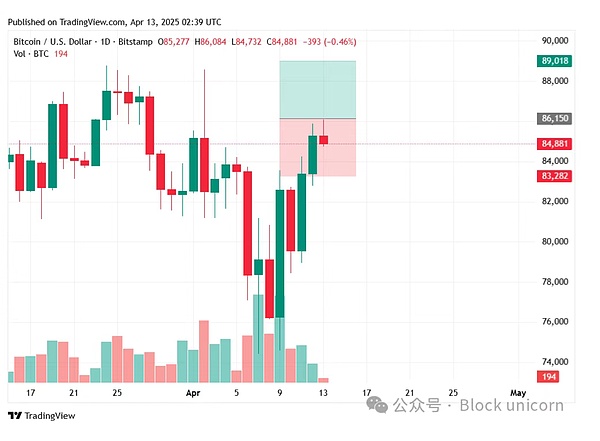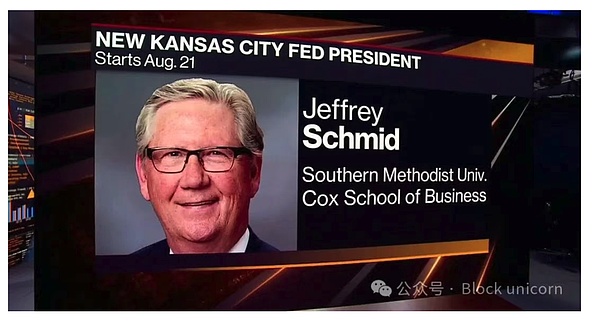Something deeper is breaking — and it’s not something you can measure with sentiment surveys. It’s a breakdown in structural trust. The belief that someone somewhere is in control — whether it’s the Federal Reserve, the White House, or global trade alliances — is eroding.
Last week, Trump reignited the trade war by slapping tariffs on Chinese goods at 145%. Markets roiled. Recession alarms rang. And quietly, almost defiantly, Bitcoin rose.
People can feel it. They may not be able to explain it, but they feel it: The old system isn’t working the way it used to. They’re starting to ask the really important question:
When it breaks down, what replaces it?
America’s trade supremacy is gone
In 2000, the United States was the center of global trade. U.S. trade totaled more than $2 trillion. And China? Only $474 billion.
Fast forward to 2024: China leads the world with $6.2 trillion in trade, while the U.S. lags behind at $5.3 trillion. The global business map has flipped. Countries in Europe, Africa, Asia, and South America trade more with China than with the U.S.
This isn’t just data. It’s a wake-up call. America’s grip on the global economy is waning.
A tariff war that feels like an economic nuclear bomb
Trump’s latest move isn’t a simple policy adjustment. It’s an all-out offensive — a 145 percent tariff on Chinese imports. Hours later, he offered a 90-day pause for countries that didn’t retaliate, with a 10 percent base tariff as an incentive.
Countries seized the opportunity to recalibrate. Canada offered to remove its own tariffs. The European Union considered suspending its countermeasures. Trump, for his part, staged a real-time comeback at the negotiating table.
Then he invited China’s leader to meet. While that meeting has yet to happen, the message is clear: America is on the offensive.

Markets — From Love to Hate
For a while, markets soared. The S&P 500 rose 10% in a single day — one of its biggest one-day gains in years. Then Bitcoin rose, too. Even gold was in demand. Markets breathed a sigh of relief.
But the optimism didn’t last. Within 24 hours, the stock market reversed. The Dow fell more than 1,300 points. The Nasdaq fell 4%. The S&P fell 3%.
The market was confused; it was volatile; and it was volatile.
The Fed is watching the market
Jeff Schmidt, president of the Federal Reserve Bank of Kansas City, said what everyone knew: The Fed is now watching the market to make sure liquidity keeps flowing.

Generally speaking, this is not what you do in normal circumstances. It’s what you do when you’re one step away from a shock to the system.
The CPI report showed a cooling of inflation. Core inflation rose just 0.1%. That’s good news, right?
But this is lagged data — it was collected before the tariffs took effect. Amazon even warned that it bought inventory in advance to soften the blow, but the costs would eventually be passed on to consumers. Inflation hasn’t gone away — it’s just been delayed.
Political risk has become financial risk
As the market digested all this, Elizabeth Warren called for an investigation into whether Trump manipulated the market to benefit insiders.
Then came the bombshell: Trump may try to fire Federal Reserve Chairman Jerome Powell. Rather than saying so, he asked the Supreme Court whether the president has the power to remove the head of an independent agency. This reads to me like: Tell me if I can fire Powell, but don’t say it.
Political risk? Ridiculously high.
Meanwhile, Bitcoin is doing its thing
Something interesting is happening in the crypto space as the legacy system is being pulled in all directions—attitudes are shifting in Washington.
The Senate confirms Paul Atkins as the new SEC chairman. He’s not a crypto-anarchist, but he’s not Gary Gensler either. He tends to be pro-market and less hostile to digital assets.
Trump just signed a resolution — not just an executive order — that repeals an IRS rule requiring decentralized finance (DeFi) platforms to report user activity like brokers. The resolution passed with strong bipartisan support. It’s a huge win.
The message is loud and clear: Crypto is no longer being suppressed. It’s being accepted — even embraced — by lawmakers.
Stablecoin legislation is moving forward. A market structure bill is on the table. The White House hopes to sign off on a comprehensive crypto framework by August.
Crypto doesn’t need support. But it needs clarity. And for the first time, that clarity feels within reach.
This is not just about trade
Bridgewater Associates founder Ray Dalio summed it up: "This is no ordinary recession. This is the beginning of a new monetary order."
Bond markets are turbulent. The dollar's dominance is being challenged. Trust in old institutions is crumbling. This is not a soft landing, but a systemic recalibration.
So what about Bitcoin? It's no longer just an asset, it's a way out.
It's no longer because it's popular, it's no longer because it's volatile, it's because it's outside the system that's crumbling.
That's why people are starting to look at Bitcoin - not for wealth, but for its resilience.
Because when the system starts to crumble, you don't want to be stuck in it.
Just because you want a way out.
 Kikyo
Kikyo




